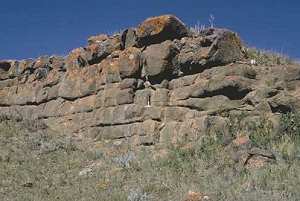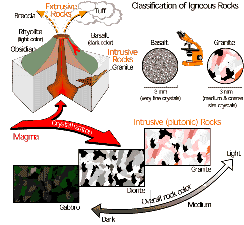 Heritage Community Foundation Presents
Heritage Community Foundation PresentsAlberta Online Encyclopedia
 |
 |
||
|
|
Igneous Rocks
Most of Alberta's exposed bedrock is sedimentary but there are some outcrops of igneous rocks. Volcanic rocks can be found in the mountains of Waterton Lakes National Park and north to the Crowsnest Pass. Intrusive rocks, such as granites, form extensive parts of the Canadian Shield in northeastern Alberta. They can be seen particularly well at Fort Chipewyan and the Slave River Rapids. There are also small outcrops of such rocks south of the Milk River.
Reprinted from A Traveller's Guide to Geological Wonders in Alberta by Ron Mussieux and Marilyn Nelson with the kind permission of the authors and the Provincial Museum of Alberta. |
||
For more on the natural history of Alberta, visit Peel’s Prairie Provinces.










